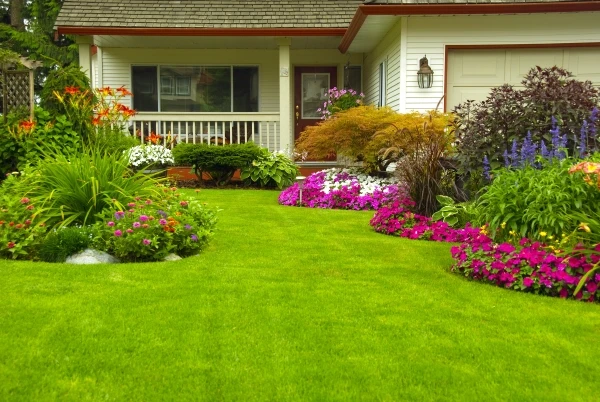The Grounds Guys explain the importance of understanding your landscaping zone for optimal plant growth.
|
If you are someone who hasn't had much success growing plants and flower in and around your yard, there may be a good reason. Before you throw up your hands and sell off your gardening tools you need to read this article because you may very well have a ‘green thumb’ after all.

Have you ever wondered if there was an online resource that could help you find out what kind of plants thrive in your location? Have you heard people mention landscaping zone maps, but aren’t sure what they refer to or why they matter? Determining which landscaping zone you are in is a relatively simple task, but decoding what that means to gardening success is not as easy. In this article we’ll review how the landscaping zone maps can help you determine which plants will thrive in your area.
Find Your Zone
The best way to figure out where a certain plant can grow is to identify its hardiness zones. North America is divided into 11 numbered zones, with Zone 1 describing subarctic conditions in Northern Canada and Alaska, and Zone 11 describing the tropical regions of Southern Mexico. A rule of thumb is the further north you live, the lower your plant hardiness zone number is. The most reliable way to determine your landscaping zone is by referring to the Plant Hardiness Zone Map. The map is based on the average annual minimum winter temperature, divided into 10-degree F zones.
Why Zones Matter
The Plant Hardiness Zone Map is the standard by which gardeners and growers can determine which plants will work best in their area due to weather and area conditions. Although this map can help you determine what plants work best in your area, it does not necessarily guarantee a plant will live if exposed to certain conditions.
Limitations
Although this Plant Hardiness Zone Maps can be helpful, it does have some shortfalls. The information provided by it may be inaccurate based on the microclimate of your exact location. Even if a plant is usually known to work well in your area, conditions such as soil moisture and pH levels, elevation, ground slope, wind, and sun exposure can affect the plant’s ability to thrive. Although the temperature may be suitable for a certain plant, the environmental conditions can override that and make it hard to survive.
Microclimates
It is important to consider microclimates when considering this map. For example, coastal Seattle is in Zone 8, as is dry Tucson, but the same plants won’t necessarily grow in both places. At first glance, you may think that just because a plant works in Seattle it should also grow well in Tucson, because they are in the same zone. Unfortunately, this is not always the case. They may have comparable weather temperatures, but the other environmental features can affect the success of plants blooming. Keep this in mind when assessing your climate conditions and choosing what to plant.
Landscape Design
Because of the limitations of hardiness zone maps, it’s helpful to work one-on-one with a local landscape specialist to make sure you choose the right plants for your microclimate. The Grounds Guys can give you expert advice and help you come up with a landscape design that will be the envy of your neighborhood. Consulting with us before you buy your landscaping can save you time, money and a lot of frustration. To learn more, request an estimate today!